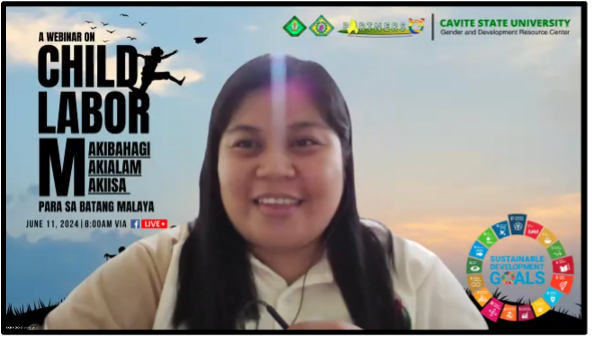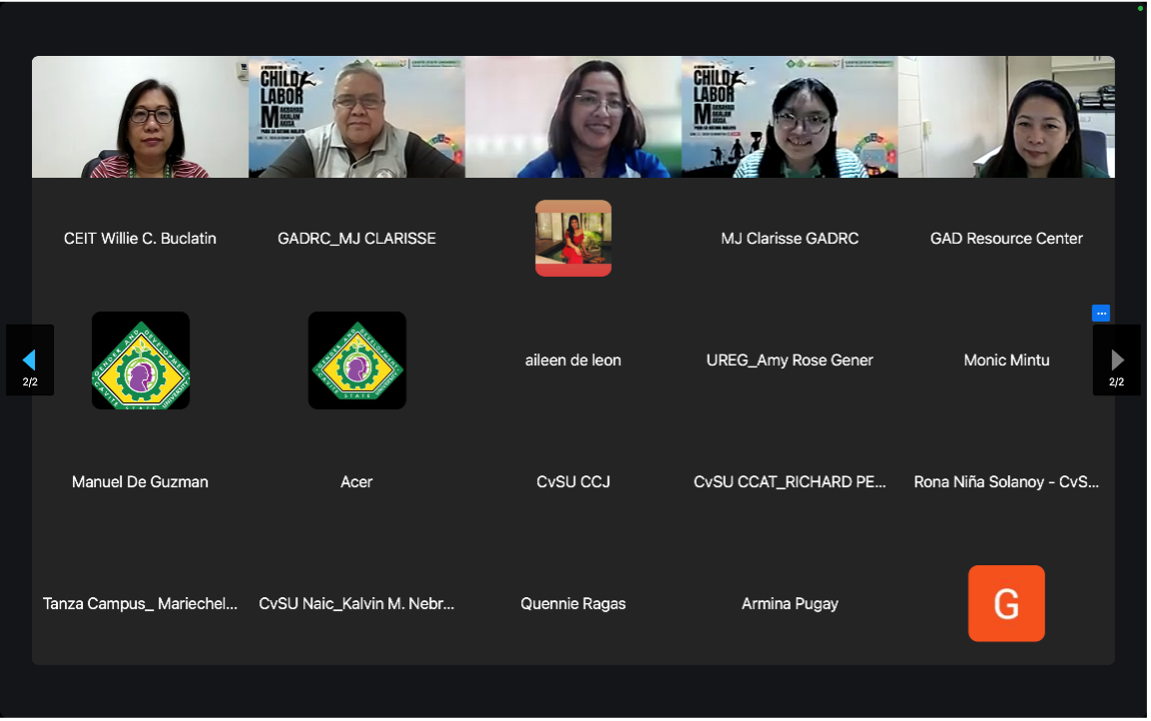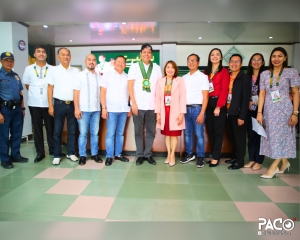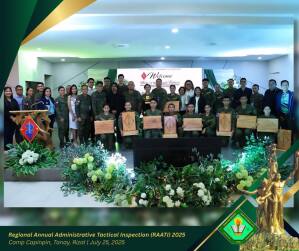![]()
In celebration of the Child Labor Day or World Day Against Child Labor on June 12, 2024, Cavite State University (CvSU), through the Gender and Development Resource Center, conducted a webinar entitled, “Child Labor – Makabahagi, Makiisa para sa Batang Malaya” held on June 11, 2024, via video conferencing and Facebook live.
The webinar aimed to increase awareness on sexual abuse and exploitation, particularly the Commercial Sexual Exploitation of Children (CSEC), Online Exploitation of Children (OSEC), and Child Sexual Abuse and Exploitation Materials (CSAEM). It also sought to provide an understanding of the definitions, legal frameworks, and best practices for addressing child labor; recognize the various situations that make children vulnerable to the worst form of child labor; and clearly define participants’ roles in protecting children from exploitation.

To formally start the webinar, Dr. Willie C. Buclatin, Dean of the College of Engineering and Information Technology, delivered the opening message. He warmly welcomed the participants and expressed hopes that the webinar would address or find solutions to child labor issues in the Philippines. He emphasized that the goal of this activity was to provide participants with knowledge and insights to become part of the solution. He encouraged everyone to participate in discussions addressing the current child labor problem.

“Child Labor in the Philippines: A Situationer” was discussed by Ms. Dianne G. Digma, Community Facilitator from DOLE Cavite. She began her discussion with data about working children and child labor situation. She said that according to the 2011 survey by the Philippine Statistics Authority, an estimated 2.1 million children, aged 5 to 17, were engaged in child labor, with CALABARZON ranking as the 4th area with the highest incidence. The 2020 Labor Force Survey also showed an estimated 597 thousand children aged 5 to 17 engaged in child labor, with CALABARZON ranking as 5th area with higher incidence. It was concluded that most children involved in child labor were males working in the agriculture industry.
Afterwards Ms. Digma also discussed the topic “Revisiting Child Labor – Related Laws and Policies,” including PD 422, PD 603, R.A 11930, R.A 10631, R.A 10821, R.A 10163, R.A 10821, and R.A 9231.

The session was then followed by the second speaker, Mr. Ray Andrew P. Villafuerte, Project Development Officer III, Secretariat, RIACAT-VAWC IV-A, who discussed “Commercial Sexual Exploitation of Children (CSEC) and Online Sexual Exploitation of Children (OSEC) in the Philippines: A Situationer.” He presented quick facts about OSAEC – CASAEM, stating that the Philippines is one of the top 10 countries producing child pornography material globally. According to him, nearly half (43.8%) of Filipino children aged 13-17 years experienced violence on the internet, with the average age of children going online is 10 years old, and eight out of 100 children interact regularly with someone they met online. It is estimated that 500,000 online predators are active each day, nearly half a million Filipino children were trafficked, and nearly quarter of a million adult Filipinos trafficked children to produce new sexual exploitation material in 2022.

To conclude the webinar, Mr. V-jay S. Eusebio delivered the closing message on behalf of Dr. Marissa Lontoc – Ikan, Officer-in-Charge of the College of Criminal Justice. He expressed gratitude to the two resource speakers for sharing their expertise, by opening the eyes of the viewers on child labor and exploitation. He emphasized that this webinar is indeed one of informative activities aimed at preventing child labor and responding to the issue effectively and efficiently. Lastly, he stated that the challenge now is to take action to prevent this illegal and inhumane crime, and to be responsive to observe human rights, proactive, and vigilant to our communities because, above all, the welfare and safety of the children is the main priority.






